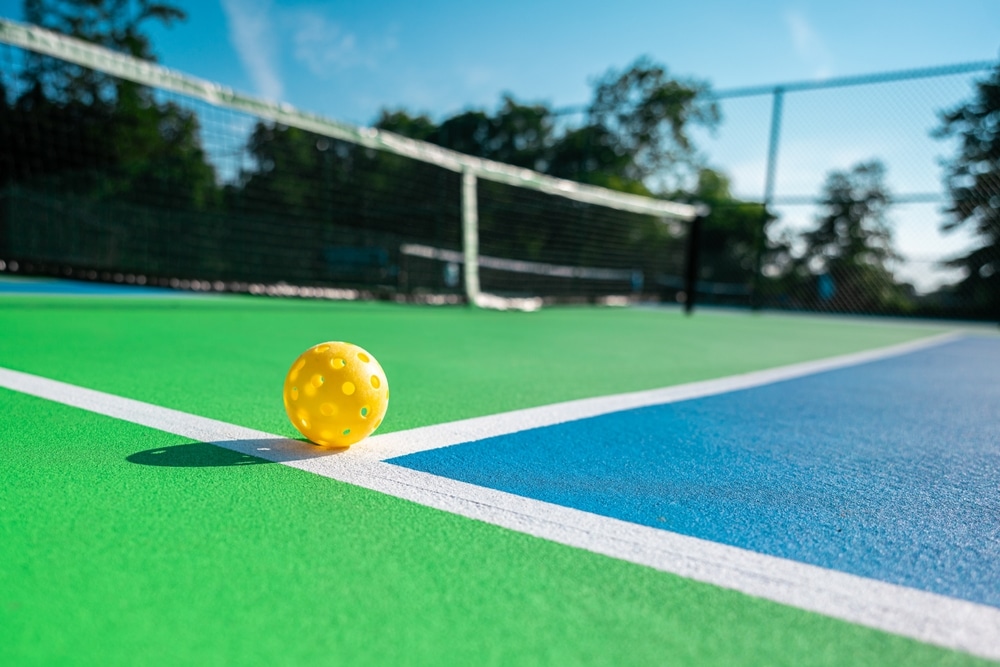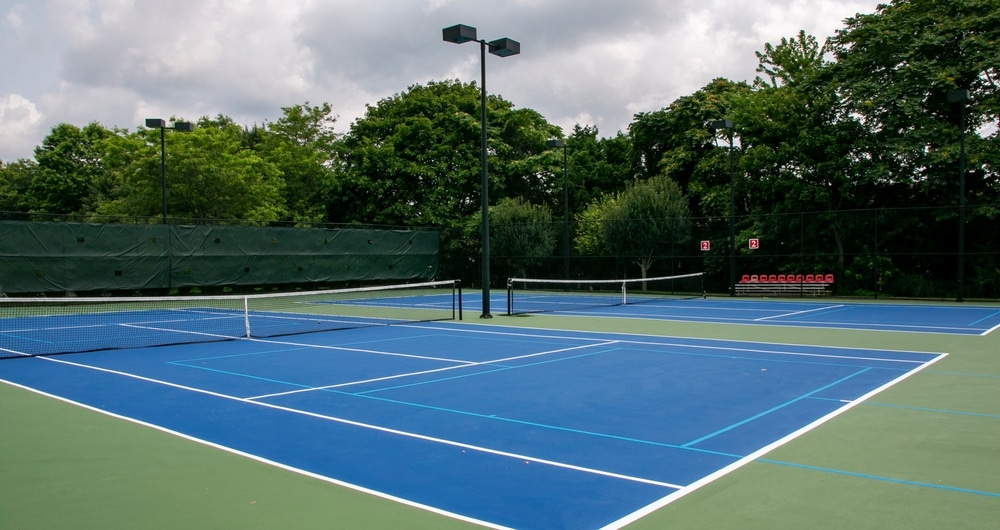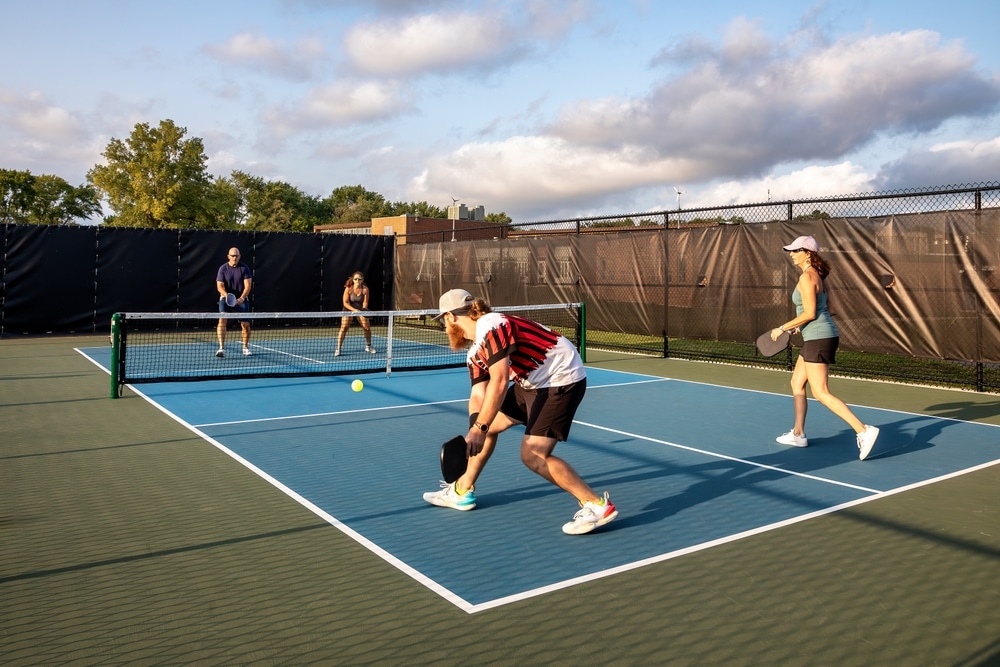Table of Contents
It is all fun and games to play pickleball on a huge court. However, to showcase your pickleball skill levels in your very own pickleball is incredible. Now, you must be left wondering how to build a pickleball court. Don’t worry; we won’t leave you wondering. In this guide, you will learn how to make a pickleball court. Whether it’s the net height or your question of how much to build a pickleball court, you’re at the right place. So, let’s dive right into it.
How to Build a Pickleball Court

Pickleball is a very popular sport. What’s interesting about this sport is that people of all ages and groups can play it. However, the sudden growth in this sport has caused a shortage of courts all over. Hence, due to this factor, more and more sports enthusiasts are learning how to build a pickleball court. Not only sportspersons but also homemakers are building outdoor pickleball courts for fun.
There are numerous important phases to build a pickleball court to guarantee a smooth and playable surface. For outdoor play, the court is typically 44 feet long and 22 feet broad, with different zones having designated measurements. The court’s base should be concrete or asphalt for the best playing conditions. Then, court surfacing materials should be used. It is essential to properly mark court lines, including the 34- and 36-inch zones. The height of the fence, the amount of space needed, and the total cost all play a role in the decision. A good pickleball court installation requires knowing the size and supplies required, whether building a pickleball court in a backyard or a public area.
Size to Consider When Building a Pickleball Court
Size is crucial when building a pickleball court for optimal play and regulation compliance. The standard 20×44-foot court suits both singles and doubles, while a 30×60-foot area works for conversions, ensuring enough movement space. Multi-court setups need proper spacing and padding fences to prevent interference.
For dedicated courts, a 34×64-foot layout is ideal, offering more maneuverability, especially in tournaments. Maintaining a net height of 34 inches at the center and 36 inches at the sidelines ensures fairness. Thoughtful sizing enhances the playing experience and overall game quality.

Surfacing Materials of a Pickleball Court
Choosing the right surfacing material is crucial to build a pickleball court. All options provide unique benefits and factors, meeting varying needs and tastes.
Concrete
Concrete is distinguished by its unmatched value and durability. It offers a sturdy, long-lasting base for pickleball games that can withstand repeated heavy use. Because of its durability, concrete is a well-liked option for permanent court installations, guaranteeing consistent performance with little upkeep.
Asphalt
With reasonable durability and performance at a lesser cost, asphalt offers a more affordable option to concrete. In contrast to concrete, it could require more maintenance because it needs to be sealed and repaired regularly to retain its integrity. Asphalt is still a good choice for people looking for a cost-effective solution that doesn’t compromise durability like concrete.
Snap-Together Plastic
Plastic surfaces offer ease and versatility, specifically designed for retrofitting pre-existing asphalt or concrete courts. These modular systems offer a rapid fix without permanently changing the court because they are simple to place over the current surface. This alternative offers versatility without sacrificing performance, making it advantageous for multipurpose courts where pickleball is not the only activity offered.

Homemade Pickleball Court: Net System
When building a pickleball court, carefully select a durable net system suited for outdoor conditions. Essential components include two poles, a net, and a ratchet, with sleeves if needed based on the surface. Ensure court dimensions meet regulations: 34 inches high at the center, 22 feet wide, and 44 feet long. Position poles 36 inches beyond the sidelines for proper alignment.
For longevity and smooth play, use concrete or asphalt as the court surface. Opt for a versatile net system for both indoor and outdoor use. Factor in costs for materials, labor, fencing, and markings. Follow precise installation steps and engage with pickleball communities for guidance, creating an ideal playing space.
Private DIY Pickleball Court – The Cost
Now, the question arises: how much would it cost to build a pickleball court?
Building their DIY court might be fun for those who want to play pickleball whenever they want. Even while the initial outlay may appear large, breaking down the costs can provide some perspective and a budgetary road map.
When building a pickleball court from the ground up, the main costs are site preparation, court surfacing, installing nets and fencing, equipment, and training supplies. While adding to the overall cost, lighting and seats improve the court’s utility, particularly for hosting tournaments and nighttime play.
Let’s look at the breakdown of expenses to build a pickleball court to get a better idea:

Development of the pickleball court site
$7,000.
For court coloring, surface, and striping
$10,000
For net and permanent net posts
$750
For fencing
$2,000
Equipment for pickleball and training
$1,250
These expenses total $20,000 for the most basic USA pickleball court layout. Depending on preferences, additional facilities like lighting ($1,800), player seating ($1,200), and spectator seating for tournaments ($6,000) can raise the total cost to between $29,000 and $37,000.
Do-it-yourself projects can save much money on labor costs for individuals determined to cut expenditures. Still, cautious preparation and strict respect for safety regulations are necessary. You can achieve further cutting cost on the project by efficiently procuring materials and looking into substitutes for facilities like chairs.
Ultimately, having your DIY pickleball court allows you to customize the space to your tastes, guaranteeing years of enjoyable play. It’s a worthwhile endeavor for enthusiasts because of the long-term satisfaction and ease, even though the upfront price may vary depending on personal preferences.
Final Thoughts
Want to create the perfect pickleball retreat? Building a court requires careful planning, whether for indoor or outdoor play. Every detail counts—from choosing the right square footage to selecting a durable concrete or asphalt surface and ensuring precise 22×44-foot court lines.
Whether constructing from scratch or converting a tennis court, understanding pickleball court design is key. Maintain a net height of 34 inches at the center and 36 inches at the sides, and for outdoor courts, position them north-south to minimize sun glare. Lastly, factor in costs, as DIY expenses vary based on labor and materials.




